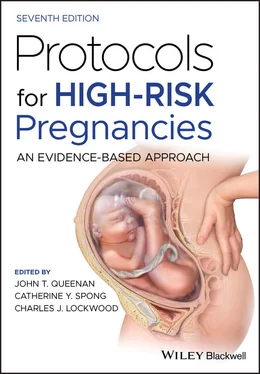1 ...6 7 8 10 11 12 ...38 The long‐term effects of alcohol delivered to infants via breast milk have not been well studied. In a study of 400 infants born to women in a health maintenance organization, motor development, as measured by the Psychomotor Development Index (PDI), was significantly lower in infants exposed regularly to alcohol in breast milk (even after controlling for prenatal alcohol exposure), with an inverse dose–response relationship noted between frequency of maternal alcohol consumption and scores on the PDI. In a similar study from the same group, however, there was no association between alcohol exposure and scores on the Griffiths Developmental Scales in 18‐month‐old children.
Breastfeeding while consuming alcohol may carry some neurodevelopmental risk for the infant; however, of greater concern is the impact alcohol may have on childcare and safety. Parental use of alcohol is considered a risk factor for sudden infant death syndrome and other infant sleep‐related deaths. Maternal alcohol use disorder (AUD) is associated with poor parenting skills, inadequate supervision, family disruption and conflict, family mobility, and increased risk for child abuse and neglect.
Screening for alcohol use
The US Preventive Services Task Force recommends that all adults seen in a primary care setting, including women seen annually by OB‐GYNs, should be screened for alcohol use and counseling should be provided when there is evidence of risky or harmful drinking. Referral to a specialist for treatment should be considered when there is evidence of an AUD. There is evidence that routine screening and brief behavioral counseling interventions in women who engage in at‐risk drinking reduce the incidence of alcohol‐exposed pregnancies.
All women seeking obstetric care should be screened for alcohol use within the first trimester of pregnancy and again during the postpartum period; however, screening for alcohol use in an obstetric setting can be more complicated. Many women fear that disclosure of their alcohol use may have negative consequences, such as criminal or civil penalties or the loss of custody of their children. Therefore, it is crucial that, when screening for substance use, clinicians must assure their patients that the information disclosed is privileged and confidential.
Many validated screening tools for AUDs are available, including the CAGE, Alcohol Use Disorders Identification Test (AUDIT), and the revised AUDIT‐C; however, most of these commonly used tools have not been validated in pregnant populations. The American College of Obstetricians and Gynecologists (ACOG) and the National Institute on Alcohol Abuse and Alcoholism recommend using the T‐ACE or revised TACER‐3 (T‐tolerance, A‐annoyance, C‐cutting down, and E‐eye Opener) screening tools which have been specifically validated for use in pregnant women. Because T‐ACE/T‐ACER‐3 define risky drinking as the consumption of one ounce or more of alcohol per day and identify patterns of use suggestive of AUD, additional questions must be used to assess for the use of any alcohol.
Another option is the Substance Use Risk Profile–Pregnancy (SURP‐P), which was designed specifically to screen for alcohol and other illicit/recreational drug use in pregnancy. The SURP‐P is easily administered and consists of three questions: 1) Have you ever smoked marijuana? 2) In the month before you knew you were pregnant, how many beers, how much wine, or how much liquor did you drink?, and 3) Have you ever felt that you needed to cut down on your drug or alcohol use? Scoring requires tallying the number of affirmative responses (0 = low risk, 1 = moderate risk, 2–3 = high risk).
Screening for alcohol use during pregnancy allows clinicians to stratify risk in women according to their patterns of use. It is recommended that women at low risk should receive brief counseling regarding the risk of alcohol use during pregnancy. Women classified as moderate risk should receive a brief intervention (described below), and women at high risk should be referred for specialized substance abuse treatment.
Providers must also be aware of the possibility of concurrent psychiatric illness, as women with risky alcohol use are more likely to suffer from psychiatric illness, and women with untreated psychiatric illness are more likely to use alcohol (and other substances) during pregnancy. Consultation with mental health professionals is indicated and attending to co‐morbid psychiatric illness can increase the likelihood of abstinence during pregnancy and improve compliance with prenatal care.
Intervention and referral to treatment
Screening, brief intervention, and referral to treatment (SBIRT) is a comprehensive, integrated public health approach used to identify and deliver services to those at risk for substance use disorders and has the potential to reduce the burden of substance use in pregnancy. SBIRT may be implemented in a variety of healthcare settings and adapted for culturally diverse populations. The Department of Health and Human Services Substance Abuse and Mental Health Services Administration (SAMHSA) provides many useful materials to facilitate implementation of SBIRT which consists of three basic components.
1 Screening by a health professional using validated instruments can quickly assess the severity of substance use and identify the appropriate level of care.
2 Brief intervention focuses on increasing insight and awareness regarding substance use and motivation toward behavioral change.
3 Referral to treatment provides those identified as needing more extensive treatment with access to specialty care.
After screening, women at moderate risk should receive a brief intervention which typically involves counseling sessions, approximately five minutes in length, tailored to the severity of the identified alcohol problem. During the first meeting, the provider should state her/his concerns and help to set goals. Educational materials should be provided. Routine follow‐up is essential; subsequent visits should involve encouragement, information, and reevaluation of goals. Wright and colleagues ( Table 1.1) have modified SBIRT for use in pregnant women, leveraging the motivation inherent in the desire to have a healthy pregnancy.
Table 1.1 Four components of brief intervention
Source: Wright et al. (2016). © 2016 Reproduced with permission of Elsevier.
| Raise subject |
“Thank you for answering my questions – is it OK with you if we talk about your answers?” “Can you tell me more about your past/current drinking or drug use? What does a typical week look like?” |
| Provide feedback |
“Sometimes patients who give similar answers are continuing to use drugs or alcohol during their pregnancy.” “I recommend all my pregnant patients not to use any alcohol or drugs, because of the risk to you and to your baby.” |
| Enhance motivation |
“What do you like and what are you concerned about when it comes to your substance use?” “On a scale of 0–10, how ready are you to avoid drinking/using altogether? Why that number and not a lower number?” |
| Negotiate plan |
Summarize conversation. Then: “What steps do you think you can take to reach your goal of having a healthy pregnancy and baby?” “Can we schedule a date to check in about this next time?” |
Women who are unable to reduce or eliminate consumption of alcohol during pregnancy should be referred for more intensive intervention.
Alcohol consumption during pregnancy is relatively common, with the most recent surveys indicating that 11.5% of pregnant women in the US report consuming alcohol during pregnancy. While heavy alcohol use and binge drinking pose the greatest risk to the fetus, lower levels of exposure to alcohol have been associated with birth defects, neurodevelopmental deficits, and fetal alcohol spectrum disorders. OB‐GYNs are ideally positioned to screen women for risky alcohol use both before and during pregnancy and can educate women regarding the risks of alcohol use during pregnancy and initiate interventions which significantly decrease the use of alcohol during the perinatal period.
Читать дальше












